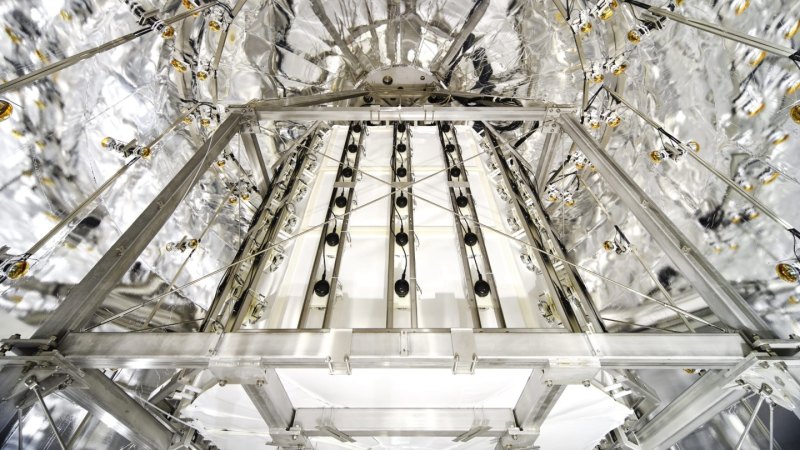
Extreme Climate Survey
Scientific news is collecting questions from readers about how to navigate our planet’s changing climate.
What do you want to know about extreme heat and how it can lead to extreme weather events?
Known as the “neutrino nebula,” the signature suggests a new way of studying hard-to-detect subatomic particles. But it also points to the beginning of the end for dark matter detectors of this kind, which aim to spot the unidentified massive particles that litter the cosmos. As these detectors become more capable, the neutrino nebula can obscure potential signatures of dark matter.
The XENONnT (pronounced “xenon n-ton”) experiment at the Gran Sasso National Laboratory in Italy found no signs of neutrinos that had been produced in the sun, physicists reported July 10 at the International Workshop on the Identification of Dark Matter in L. ‘Aquila, Italy. And the PandaX-4T experiment, at China’s Jinping Underground Laboratory in Liangshan, saw similar evidence, researchers reported at the July 8 workshop and in a paper submitted July 15 to arXiv.org.
The result “opens [a] new door of using our detectors to study neutrinos and search for new related physical phenomena,” says physicist Ning Zhou of Shanghai Jiao Tong University, a PandaX deputy spokesperson.
In the nuclear fusion processes that power the sun, multitudes of neutrinos are produced in a number of different reactions (SN: 1/9/14). Some of the most energetic come from the radioactive decay of boron-8, a type of boron created during the fusion process. Scientists have long predicted that those neutrinos are widespread enough, and have the right energies, to be seen in dark matter detectors. This is what the two dark matter detectors have found.
Each experiment contains several metric tons of liquid xenon. If a particle of dark matter crashes into the nucleus of a xenon atom, experiments can detect that the nucleus recoils in response, revealing the presence of dark matter. But neutrinos can also crash into atomic nuclei, causing similar reversals.
This type of interaction, in which a neutrino hits an entire atomic nucleus rather than an individual proton or neutron, was first seen in 2017 in the COHEREENT experiment, using neutrinos from a laboratory source (SN: 8/3/17). The two new experiments mark the first signs of nuclear fusion by neutrinos from the sun. Scientists previously discovered solar neutrinos by other means (SN: 24.6.20).
In the future, detecting solar neutrinos through the nuclei they knock into could help physicists better understand the particles. For example, scientists can study the neutrino signal to look for what detectors might be missing: hypothetical “sterile” neutrinos that won’t interact with matter at all except through gravitational forces.SN: 27.10.21). Dark matter detectors can also distinguish neutrinos from other sources, such as nearby exploding stars.
“It’s very interesting to see that we can turn this detector into a neutrino observatory,” says physicist Michael Murra of Columbia University, a member of the XENONnT collaboration.
Neutrinos are not yet limiting the performance of dark matter detectors. The solar neutrino signal would obscure only low-mass dark matter particles, which fall below the mass range that these detectors most closely examine for dark matter. There is still a long way to go before neutrinos begin to overshadow the detection of higher-mass dark matter.
The next generation of dark matter detectors, beyond XENONnT and PandaX-4T, should still be able to search for dark matter. But further improvement will start to become difficult. Instead, scientists can move to detectors that measure the direction of incoming particles. This would allow researchers to look for dark interactions originating far from the sun, eliminating solar neutrinos from their data.
#Dark #matter #experiments #neutrino #fog
Image Source : www.sciencenews.org